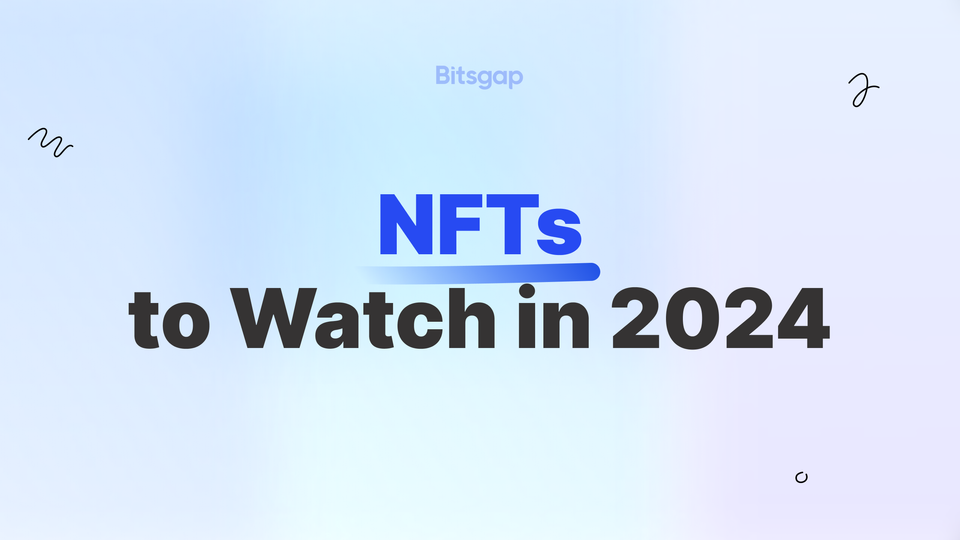
The Future of NFTs: Trends and Forecasts
Remember the NFT craze? It's not over yet.
NFTs. For a while, they seemed like the hottest thing since sliced bread, with everyone from celebrities to your next-door neighbor jumping on the bandwagon. But are they still relevant in 2024? Is anyone still buying these digital assets, or have they faded into the rearview mirror of internet hype?
In this article, we'll delve into the evolving world of NFTs, exploring their staying power and attempting to answer the burning question: What are the next big NFTs? We'll examine the major NFT trends shaping 2024 and beyond, highlighting nine trending NFT projects that could prove lucrative for savvy investors or simply provide a fun entry point into this dynamic digital landscape. Get ready to explore the future of NFTs – it's more exciting than you might think.
Brief Recap: What Are NFTs?
NFTs, or Non-Fungible Tokens, are unique digital assets that represent ownership or proof of authenticity of a specific item or piece of content, often utilizing blockchain technology to ensure their verifiability. Unlike cryptocurrencies such as Bitcoin or Ethereum, which are fungible and can be exchanged on a one-to-one basis, each NFT has a distinct value and cannot be exchanged on a like-for-like basis.
NFTs can represent a wide array of digital goods, including artwork, music, videos, virtual real estate, and even tweets. They have gained significant attention for their ability to provide artists and creators with a new way to monetize their work while offering collectors a way to own and trade digital assets in a way that was previously impossible.
Key Characteristics of NFTs
- Uniqueness: Each NFT has unique information or attributes that make it distinct from any other NFT. This uniqueness can be used to verify ownership and provenance.
- Indivisibility: NFTs cannot be divided into smaller units. They exist as whole items.
- Ownership: Ownership of an NFT is recorded on a blockchain, providing a transparent and immutable record of who owns the asset.
- Interoperability: NFTs can often be used across different platforms and applications that support the same blockchain standards, such as Ethereum.
How NFTs Work
NFTs are typically created, or "minted," on a blockchain that supports smart contracts. Ethereum is the most commonly used blockchain for NFTs, utilizing the ERC-721 and ERC-1155 token standards. When an NFT is created, a unique identifier is assigned to it, and information about the asset, such as metadata and ownership details, is stored on the blockchain. This decentralized ledger ensures that the information is secure, transparent, and cannot be altered.
Use Cases for NFTs
- Digital Art: Artists can sell their digital artworks with proof of authenticity and ownership.
- Collectibles: Virtual trading cards, in-game items, and other digital collectibles can be bought, sold, and traded as NFTs.
- Music and Video: Musicians and filmmakers can release their works as NFTs, potentially earning royalties from resales.
- Virtual Real Estate: Virtual worlds like Decentraland allow users to buy, sell, and build on virtual land parcels represented by NFTs.
Are NFTs Still a Thing?
Yes, NFTs (Non-Fungible Tokens) are still very much a thing and continue to play a significant role in the digital economy. While the initial hype surrounding NFTs has cooled down somewhat, the technology and its applications are evolving, and the market remains active with ongoing developments and innovations.
Current State of the NFT Market
After the explosive growth in 2021 and early 2022, the NFT market has seen fluctuations, with some periods of decline in sales volume and prices. However, several factors indicate that NFTs are far from a passing trend:
- Continued Investment: Major companies and investors are still pouring resources into NFT platforms and projects. This ongoing investment suggests a belief in the long-term potential of NFTs. The total sales volume for NFTs has already surpassed an impressive US$65 billion, with Ethereum, Solana, and Bitcoin emerging as the leading blockchain platforms for NFT transactions. This substantial figure underscores the increasing popularity and adoption of NFTs across various sectors.
- Broadening Use Cases: NFTs are expanding beyond digital art and collectibles. They are being used in real estate, intellectual property, gaming, virtual worlds, fashion, etc. Perhaps most intriguing is the potential for real-world asset tokenization. This emerging trend, which involves creating digital tokens representing ownership of physical assets, is expected to become a US$16 trillion business opportunity by 2030.
- Mainstream Adoption: More mainstream brands and celebrities are entering the NFT space, creating their own tokens and engaging with their audiences in new ways. Industry projections suggest that the Global Non-fungible Token Market could reach a staggering US$152.54 billion by 2030. This forecast represents a compound annual growth rate (CAGR) of 34.2% from 2024 to 2030, indicating a rapid and sustained expansion of the NFT ecosystem.
- Regulatory Developments: Governments and regulatory bodies are paying closer attention to NFTs, which could lead to more structured and secure frameworks for their use.
Noteworthy NFT trends and Innovations
NFTs are breaking free from the digital gallery in 2024 and 2025. Expect to see them driving real-world utility, disrupting industries, and unlocking new investment opportunities. Here are a few key things to watch out for:
- Utility NFTs: These are tokens that offer additional functionalities beyond just digital ownership. They can provide access to exclusive content, events, or communities. For instance, the Bored Ape Yacht Club ($BAYC) offers practical benefits like ApeFest, an annual event exclusively for NFT holders. This trend is expected to attract a broader audience interested in the practical applications of NFTs beyond art and collectibles.
- Real-World Asset (RWA) NFTs: This involves tokenizing physical assets like real estate, art, and luxury goods. It allows for fractional ownership of high-value assets, making them more accessible to a wider range of investors.
- Hybrid NFTs: These blend digital assets with physical items. For instance, purchasing a digital artwork might also grant ownership of a corresponding physical print, creating a multi-dimensional collecting experience. Fractional ownership reduces the entry barrier, making high-value digital assets more accessible to a wider audience. At the technical level, hybrid NFTs often utilize the ERC404 standard, which combines elements from both ERC20 (fungible) and ERC721 (non-fungible) token standards. This integration opens up new possibilities across various industries, enabling more flexible and diverse applications of NFT technology.
- NFTs in the Music Industry: Musicians are using NFTs to offer exclusive tracks, albums, or concert tickets. This provides new revenue streams for artists and unique ways for fans to support them. NFTs can also be programmed to pay royalties to artists from future sales. The music NFT industry is growing rapidly, projected to reach $80 billion by 2025.
- Gaming NFT Expansion: The gaming industry is increasingly integrating NFTs, with the NFT gaming market expected to reach $942.58 billion by 2029. This shift allows players to have true ownership of in-game items such as weapons, skins, and virtual land, fostering new digital economies within games.
- Bitcoin NFTs: With the introduction of the Ordinals protocol, minting NFTs directly on the Bitcoin blockchain has become more popular. This expands the NFT market beyond Ethereum.
- AI-Generated NFTs: AI-generated NFT collections are poised to transform the digital art space by leveraging sophisticated algorithms to create personalized and visually stunning artwork. This approach serves multiple purposes. It ensures high user engagement by presenting art that aligns with individual interests, and it aids both artists and collectors in discovering unique works that might otherwise go unnoticed.
- Social Perks & Subscription Models: NFTs are being used to create new subscription models and social benefits, enhancing user experience and engagement. Examples like TIMEPieces show how established companies can use NFTs for digital subscriptions and community building.
- Fundraising for Charities: Charitable organizations are exploring NFTs to create transparent and efficient fundraising opportunities. This innovative approach leverages smart contracts embedded in NFTs to automate fund transfers directly to charitable causes. The use of blockchain technology ensures a transparent, traceable record of all transactions, providing donors with confidence that their contributions reach the intended recipients. Moreover, NFT-based fundraising significantly reduces overhead costs compared to traditional methods. This efficiency allows a larger portion of donations to directly benefit the cause.
- NFT Ticketing: NFT tickets are transforming the event industry by offering attendees a suite of exclusive benefits and unique experiences. These go beyond traditional admission, granting holders special privileges such as VIP access, backstage passes, and limited-edition merchandise. This innovation significantly enhances the overall attendee experience, creating more value and excitement around event participation. The concept is expanding beyond entertainment, with the hospitality sector now exploring NFT-based bookings and payments.
Challenges and Considerations
Despite their potential, NFTs face several challenges:
- Environmental Concerns: The energy consumption of blockchain networks like Ethereum has been a significant issue, though solutions like Ethereum's transition to proof-of-stake aim to address this.
- Market Volatility: The NFT market is still relatively young and can be highly volatile, with prices subject to rapid changes.
- Scams and Fraud: The popularity of NFTs has attracted scams and fraudulent activities, making it crucial for buyers and sellers to exercise caution.
NFT 2024: TOP NFT & Trending NFTs
In this section, we’ll review some of the hottest NFTs. While we won't be revisiting widely recognized names like Axie Infinity, CryptoPunks, or Bored Ape Yacht Club, which have become household names in the NFT space, we'll focus on other noteworthy projects that may have flown under your radar.
TG.Casino ($TGC)
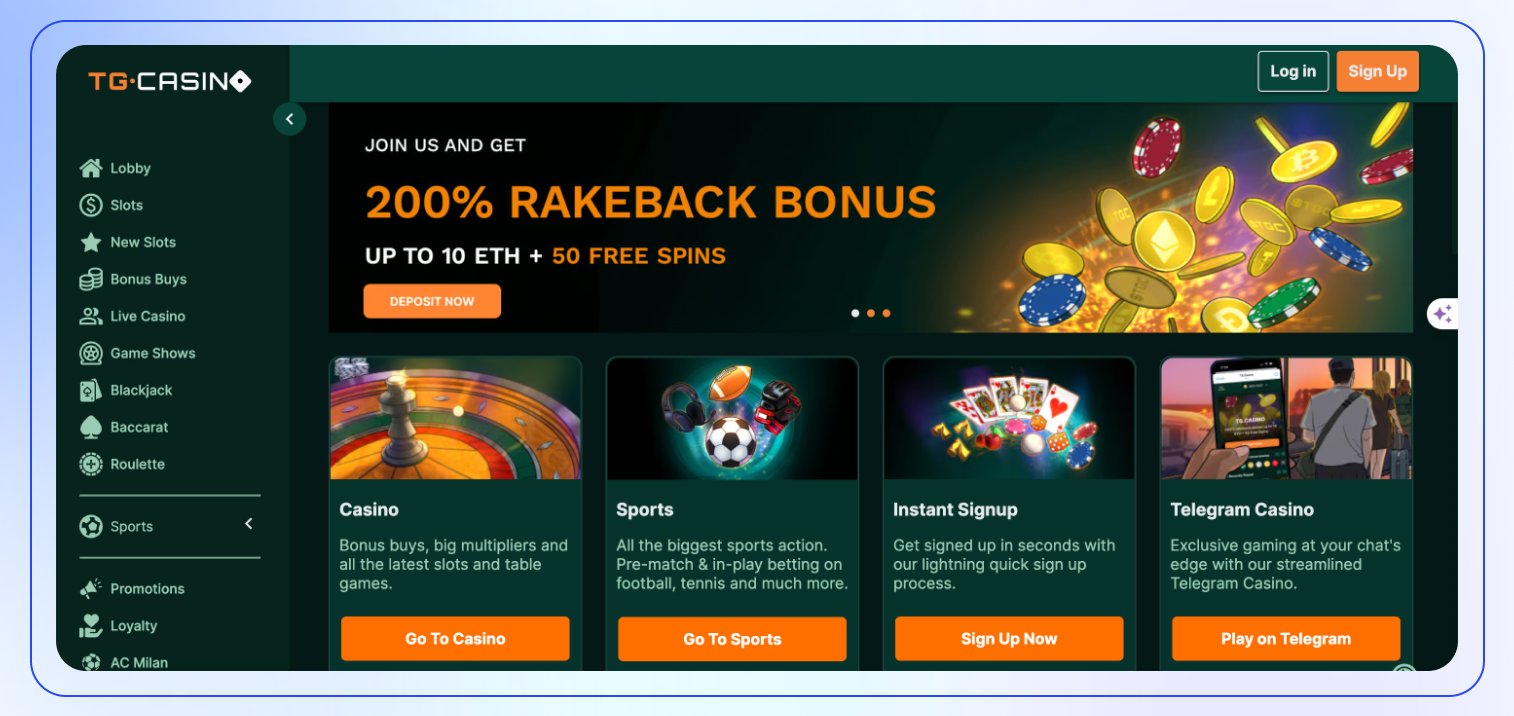
TG.Casino ($TGC) is an innovative project at the intersection of blockchain technology and online gambling. Operating on its own dedicated blockchain network, TG.Casino offers a diverse array of classic casino games, including slots, poker, and roulette. What sets it apart is the integration of blockchain technology, which enhances the fairness and trustworthiness of these games.
As the demand for decentralized applications continues to surge and the online gambling market expands, TG.Casino is strategically positioned to capitalize on these trends. Its unique approach of fusing blockchain with online gambling presents an intriguing investment opportunity within the evolving NFT ecosystem of 2024.
Gods Unchained Cards ($GODS)
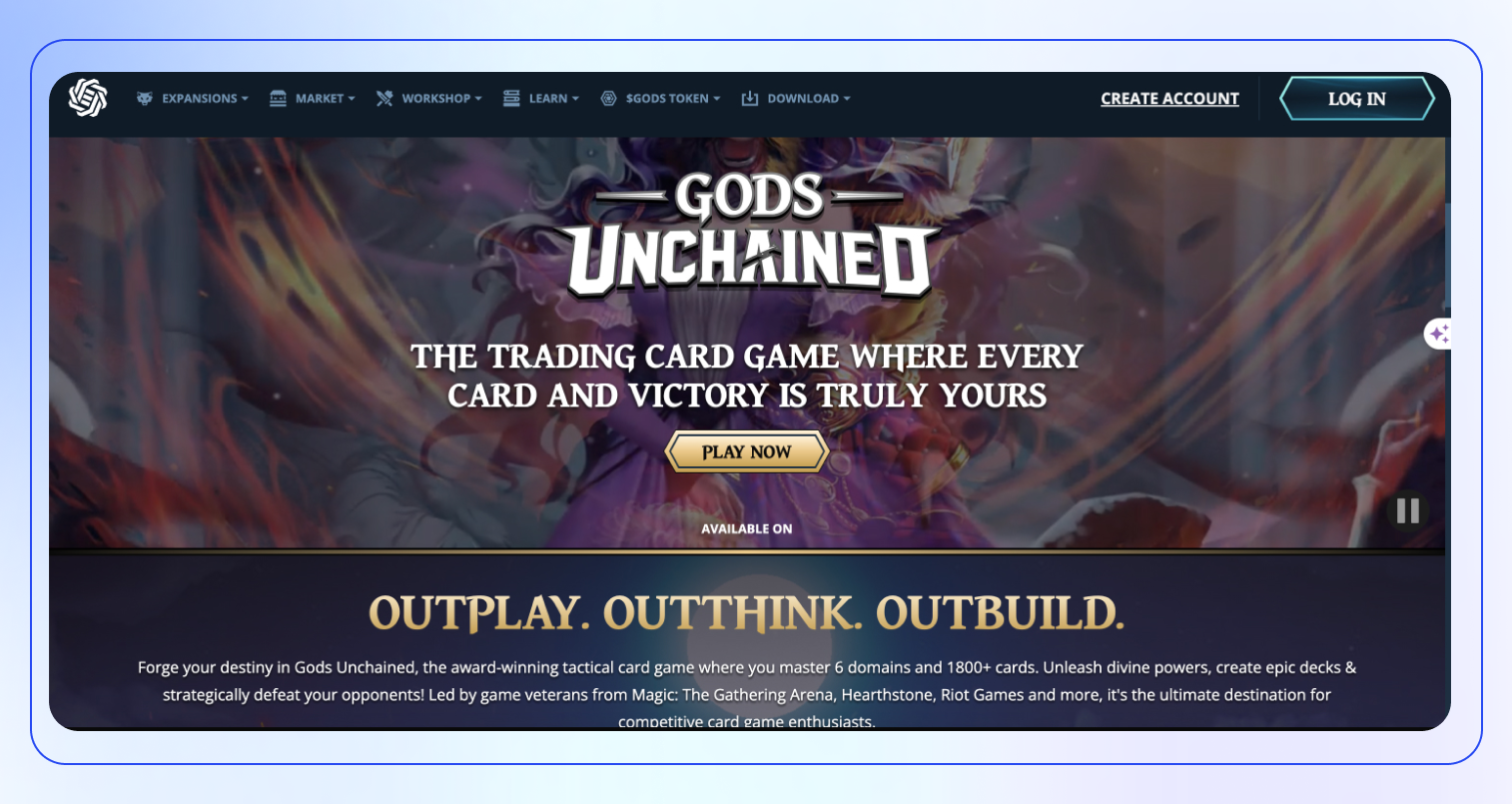
Developed by Immutable and led by brothers James and Robbie Ferguson, Gods Unchained leverages the Ethereum blockchain to offer a unique trading card game experience.
What sets Gods Unchained apart is its commitment to true digital ownership. Each card exists as a unique, verifiable NFT, empowering players to freely buy, sell, or trade their assets on various platforms. This fosters a dynamic in-game economy where players have tangible control over their collections.
Beyond ownership, Gods Unchained boasts immersive gameplay and a thriving community.
The game's popularity, coupled with the increasing demand for play-to-earn models, positions $GODS tokens as potentially lucrative assets. As the project continues to evolve and attract new players, early investors stand to benefit from its growing ecosystem.
Mutant Ape Yacht Club (MAYC)
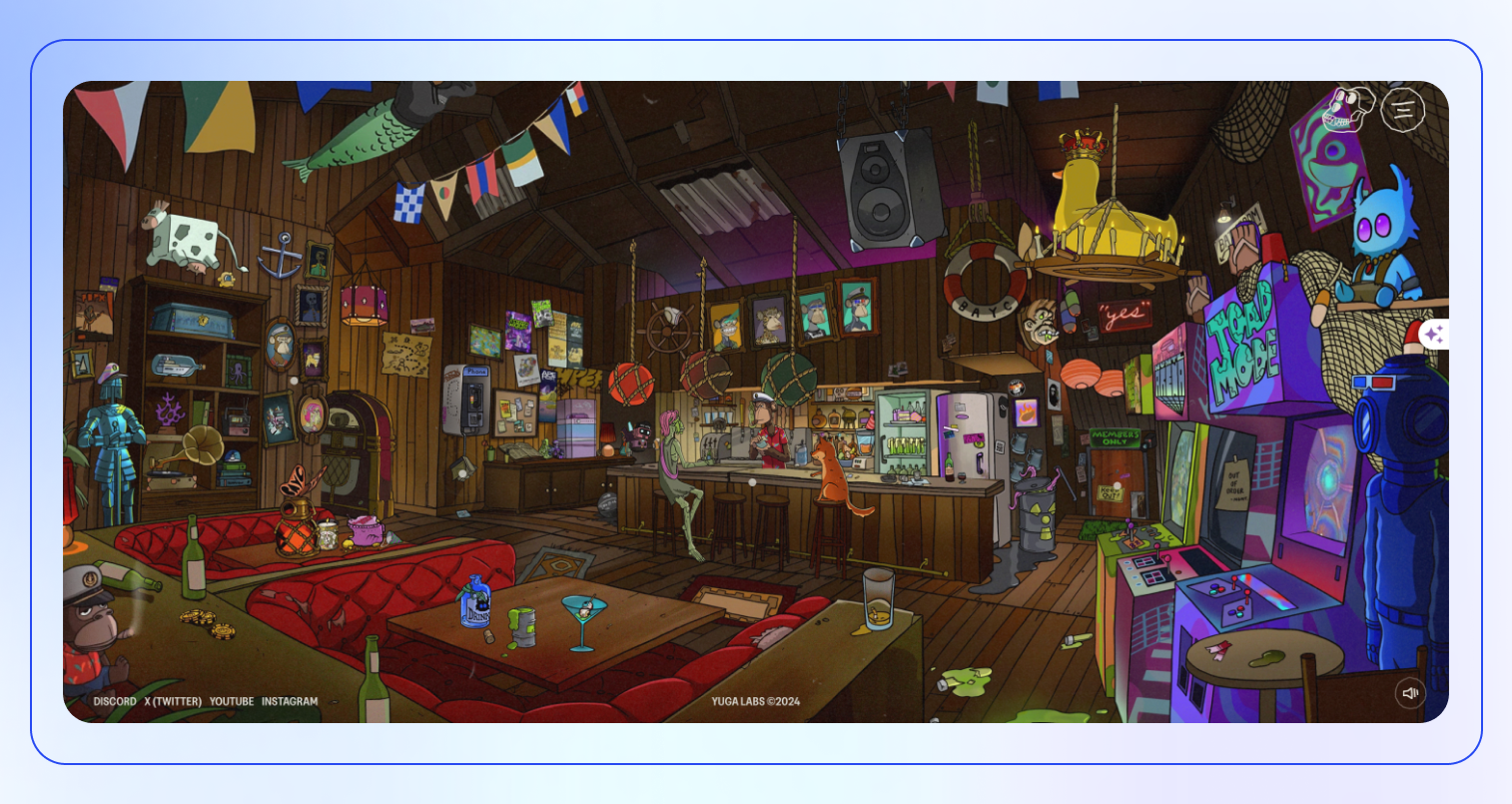
Mutant Ape Yacht Club (MAYC), an NFT offshoot of the popular Bored Ape Yacht Club (BAYC) collection, consists of 20,000 unique Mutant Ape digital art images. Half of the collection was sold in a public auction, while the other half was created by existing BAYC NFT holders who “exposed” their Bored Ape to an airdropped “Mutant Serum.” Each Mutant Ape derived from an existing Bored Ape retains the original’s traits but with mutated variations.
MAYC was among the first NFT collections to reward an existing community of holders with a free and entirely new NFT. While primarily a reward for existing BAYC holders, the project also aimed to welcome newcomers into the established BAYC community.
But why buy MAYC? Well, their association with BAYC brings multiple avenues for value appreciation, including exclusive perks and the rarity of the collection, which can drive demand and increase prices. Moreover, the team has successfully delivered on all milestones outlined in Roadmap 1.0 and has already released Roadmap 2.0, detailing key future milestones. This transparency and follow-through build trust among holders.
Pudgy Penguins (PUDGY)
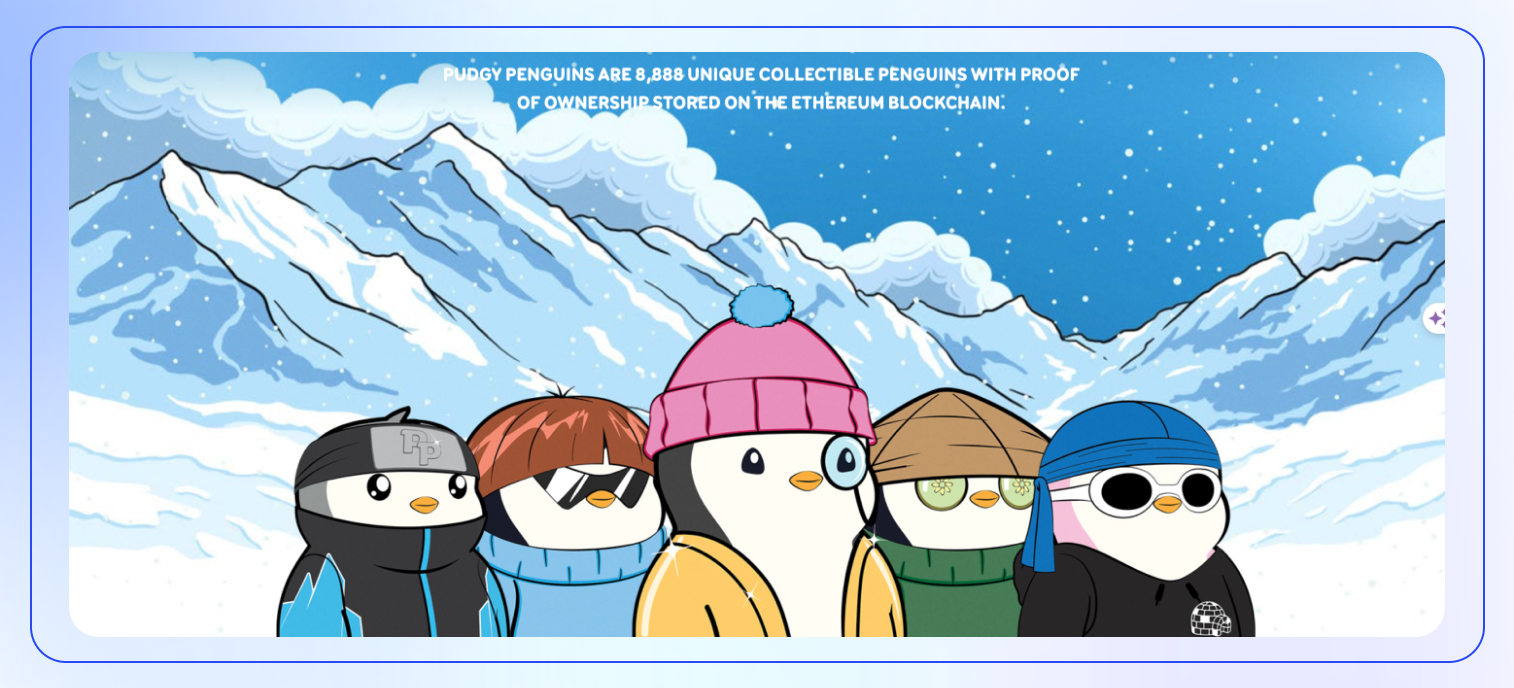
Pudgy Penguins (PUDGY), a collection of 8,888 uniquely designed penguin characters built on the Ethereum blockchain, has captured significant attention despite its mysterious origins.
What's the big deal about these digital birds, you ask? Well, it's not just their irresistible charm (though that certainly helps). It's about being part of an exclusive igloo of like-minded penguin enthusiasts and, perhaps, the promise of bigger adventures.
This potential for expanded utility, coupled with the project's growing popularity and the enduring appeal of limited-edition collectibles, positions Pudgy Penguins as a potentially high-value asset for long-term investors.
Loaf Pet
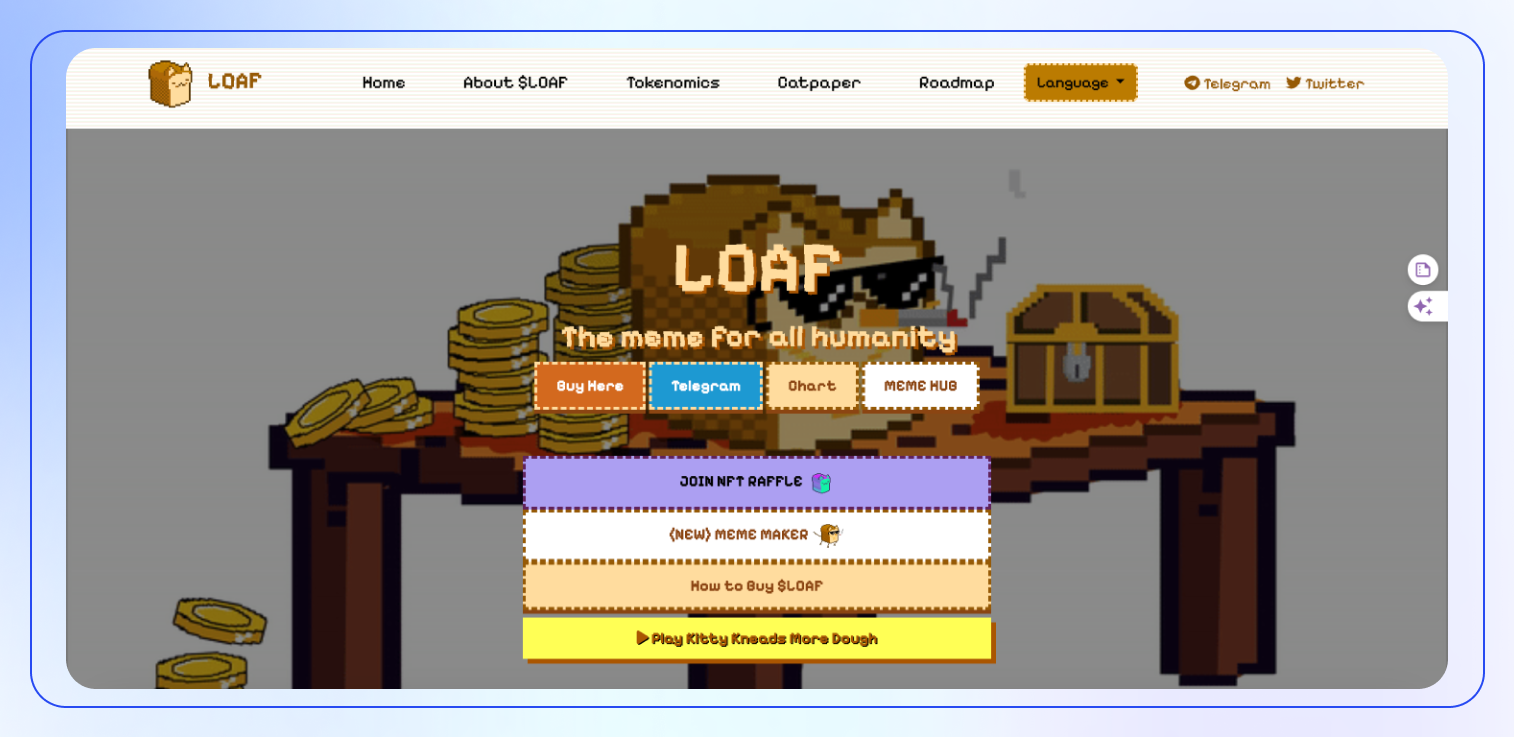
Loaf Pet NFT is an integral part of the gaming ecosystem from the Loaf Cat project on the Solana Blockchain. To participate in the game, players must own a digital bread-shaped critter, which enables them to engage in play-to-earn activities. But it’s also a whole wheat social network too. Your Loaf Pet is your avatar in a world where players can mingle, chat, and probably exchange sourdough starter recipes. It's like Facebook, but with fewer privacy concerns and more cute, carby creatures.
To acquire a Loaf Pet NFT, you need to enter a raffle at Raffle.Cat. Raffle.Cat is a blockchain-based platform where users can participate in raffles to win NFT prizes. It uses smart contracts on the Ethereum network to ensure transparency and fairness in prize distribution. Participants purchase tickets using cryptocurrency, and winners are randomly selected, fostering a vibrant community around digital collectibles.
Hypelooot
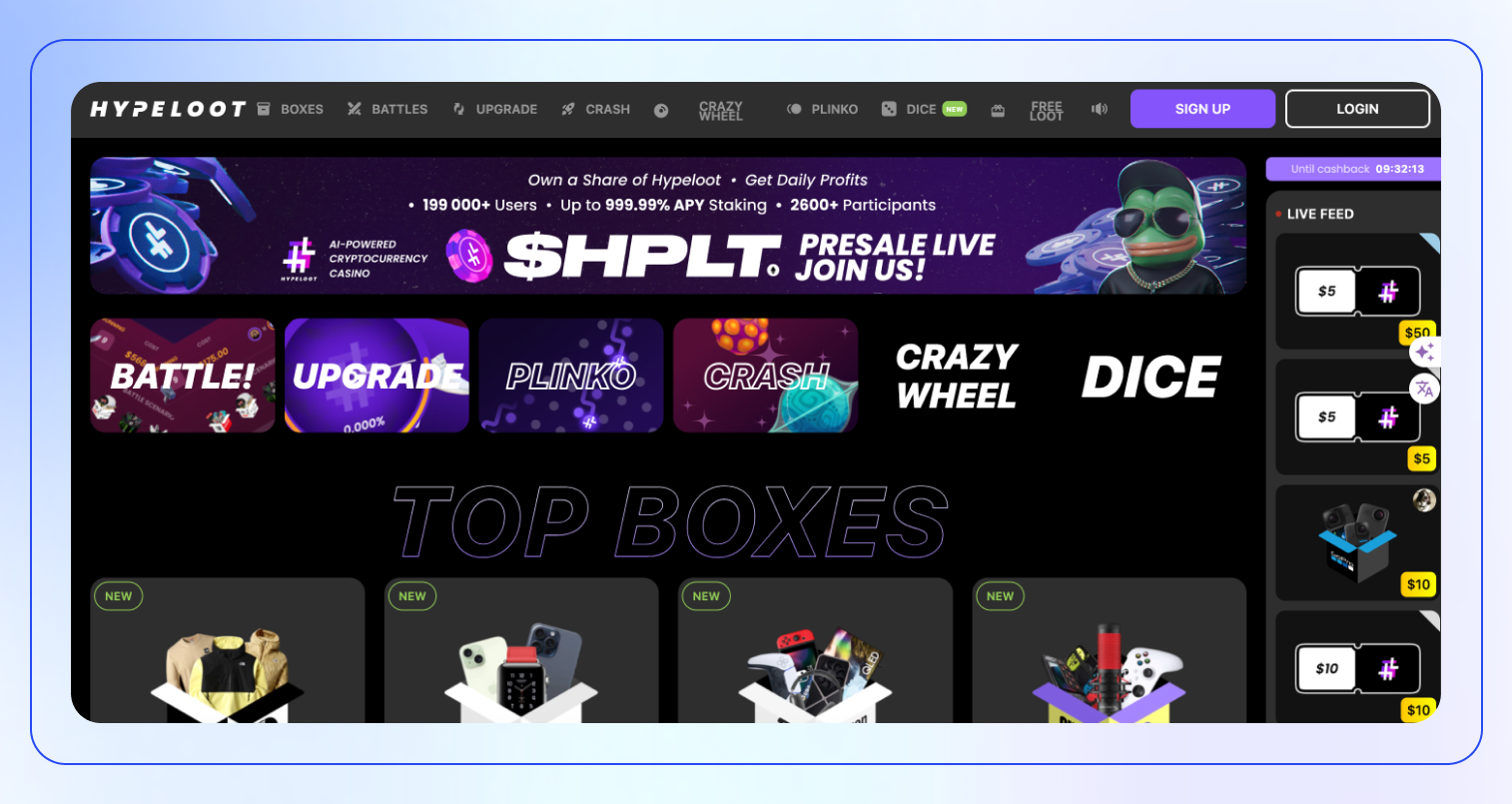
Imagine a world where your digital collectibles unlocked more than just online bragging rights. That's the world Hypelooot is building. It all starts with a mystery box – a digital treasure chest containing a surprise NFT. Some hold common collectibles, while others reveal keys to a realm of exclusive real-world experiences like concerts, meet-and-greets, and even fashion shows.
The project collaborates with celebrities, influencers, and brands to curate these exclusive experiences, adding significant value to the NFTs. By blending the excitement of surprise NFTs with the potential for unique real-life events, Hypeloot provides a captivating mix of potential value and exclusive access for its holders.
Sharx
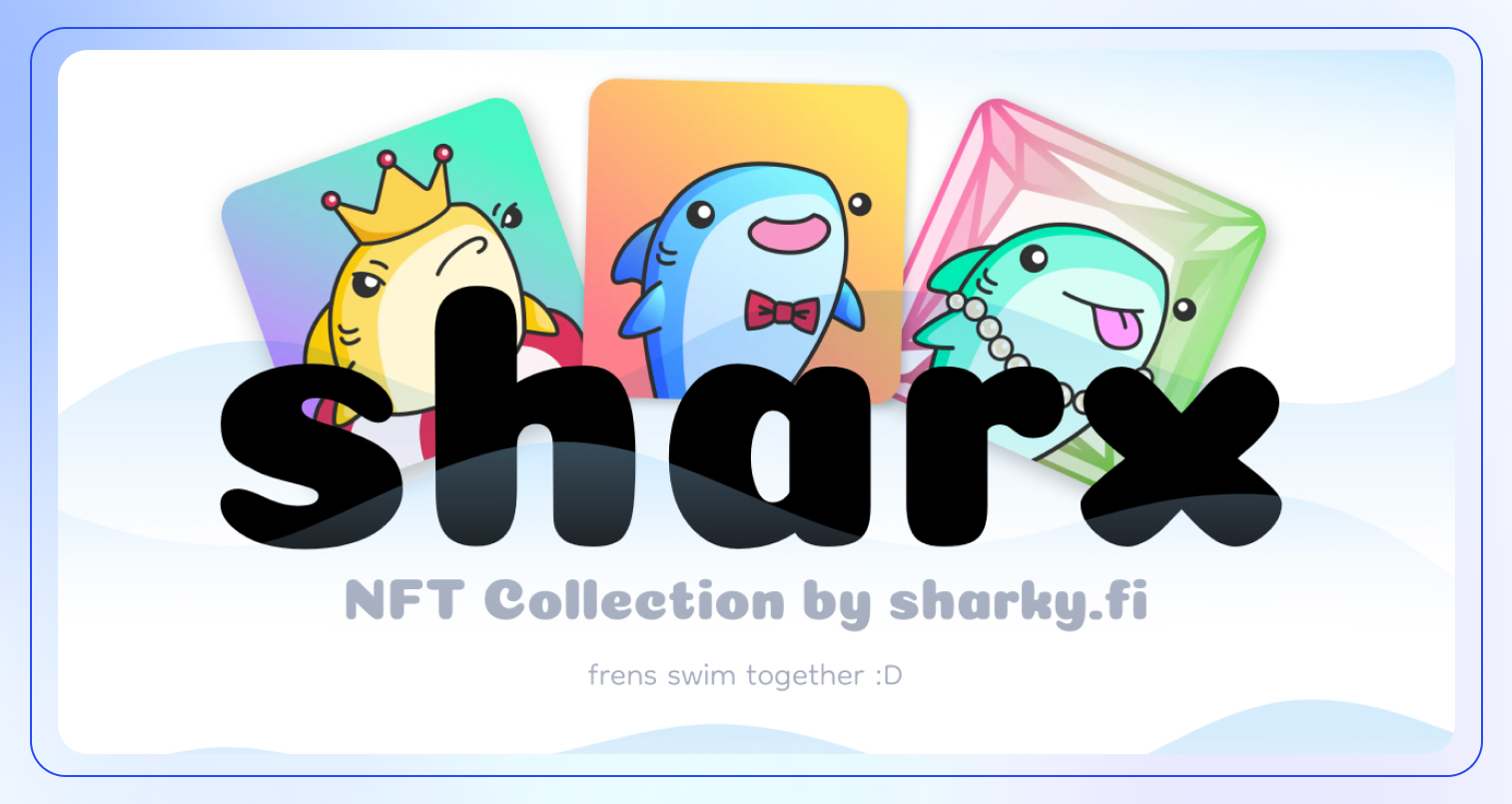
Sharx is an NFT project dedicated to transforming the sports fan experience. It offers digital collectibles of athletes, allowing fans to own unique NFTs that grant them access to a vibrant sports community. These NFTs are not just digital art; they come with practical benefits and earning potential. Sharx NFTs may provide exclusive content, voting rights on athlete endorsements, and even a share of revenue from streaming deals.
Looking ahead, the project envisions a "fan-first" metaverse where NFT holders can connect with athletes and potentially influence the sports world. By combining elements of fandom, community, and future benefits, Sharx presents an innovative way to engage with athletes and offers the possibility of appreciating NFT value.
Mavia Land
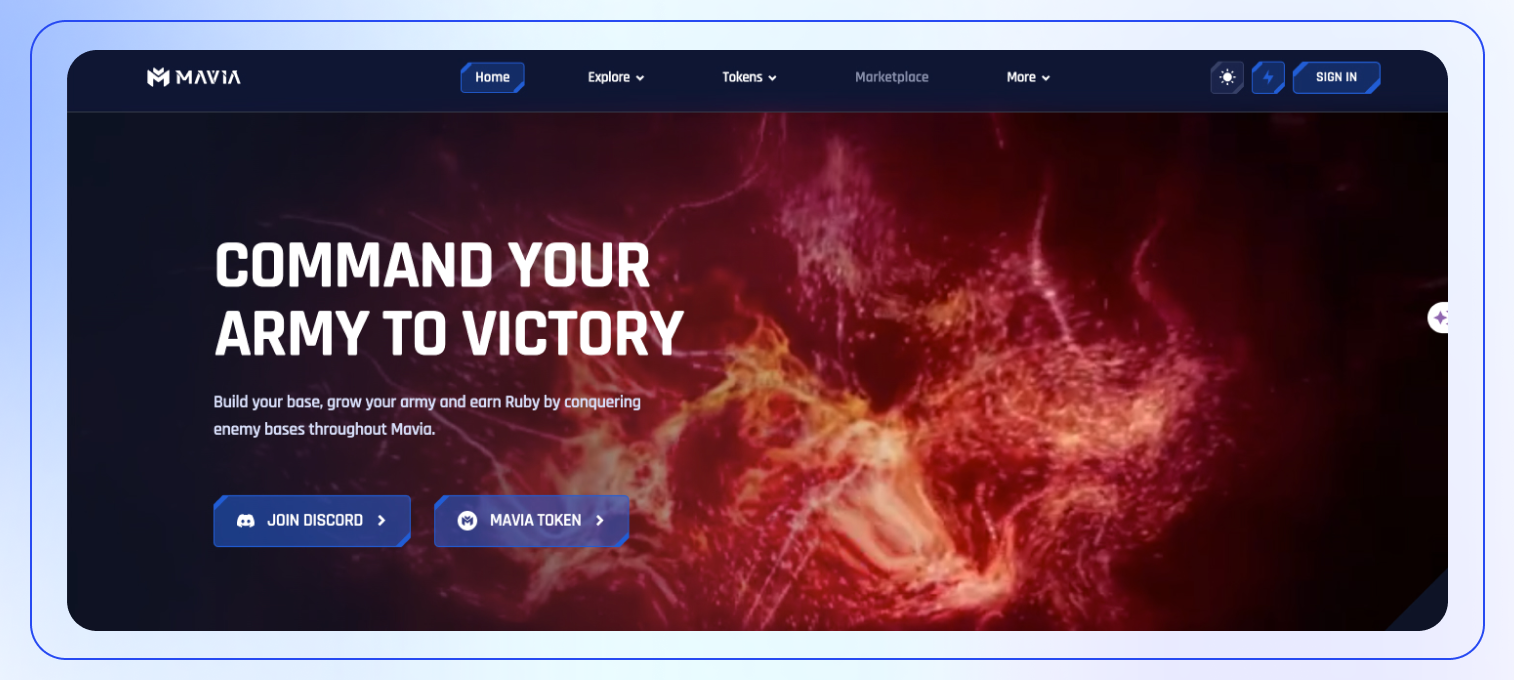
Mavia Land is an NFT project centered around the play-to-earn game Mavia. In this game, players can purchase virtual lands, which are NFTs, giving them ownership and the potential to earn in-game currency. By engaging in battles on their land, players can earn resources and the cryptocurrency Mavia coin.
Owning land in Mavia provides strategic advantages, potentially boosting both earnings and the value of the NFT land. Mavia Land thus offers a unique opportunity to own a piece of the game's world, earn income through gameplay, and benefit from the potential appreciation in the land's value.
ENS

ENS, or Ethereum Name Service, is a decentralized domain name system built on the Ethereum blockchain. Similar to NFTs, ENS domains offer ownership and functionality in a unique way. Instead of relying on long and complex crypto wallet addresses, ENS allows users to own human-readable domain names, such as "yourname.eth."
These domain names function like NFTs, granting full ownership and control, including the ability to buy, sell, or transfer them. Beyond just readability, ENS domains can be linked to your crypto wallet, website, or social media, streamlining your online identity.
Although ENS domains are not traditional collectible art or characters, they provide significant utility and ownership in the web3 world. As web3 adoption grows, these utility-driven NFTs have the potential to increase in value.
Conclusion
Okay, so, as we’ve discovered, the NFT landscape is brimming with potential. As blockchain technology evolves, with innovations like Layer 2 solutions and cross-chain interoperability coming to the forefront, we can expect NFTs to become even more functional and accessible. The increasing adoption of NFTs by diverse industries, from gaming to supply chain management, further solidifies their place in the future of digital ownership and interaction.
The NFT market will undoubtedly experience continued fluctuations, but one thing is clear: NFTs are here to stay. They represent a fundamental shift in how we perceive and interact with digital assets, offering unprecedented opportunities for creators, collectors, and investors alike.
Ready to trade some NFT tokens or any other tokens, for that matter? Platforms like Bitsgap provide a seamless and secure trading experience. Connect to over 15 major exchanges, enjoy a 7-day free trial, and leverage powerful tools like automation, smart orders, and portfolio management to navigate the dynamic crypto market with confidence. The future of NFTs is bright, and the opportunity to be a part of it is just a click away.
